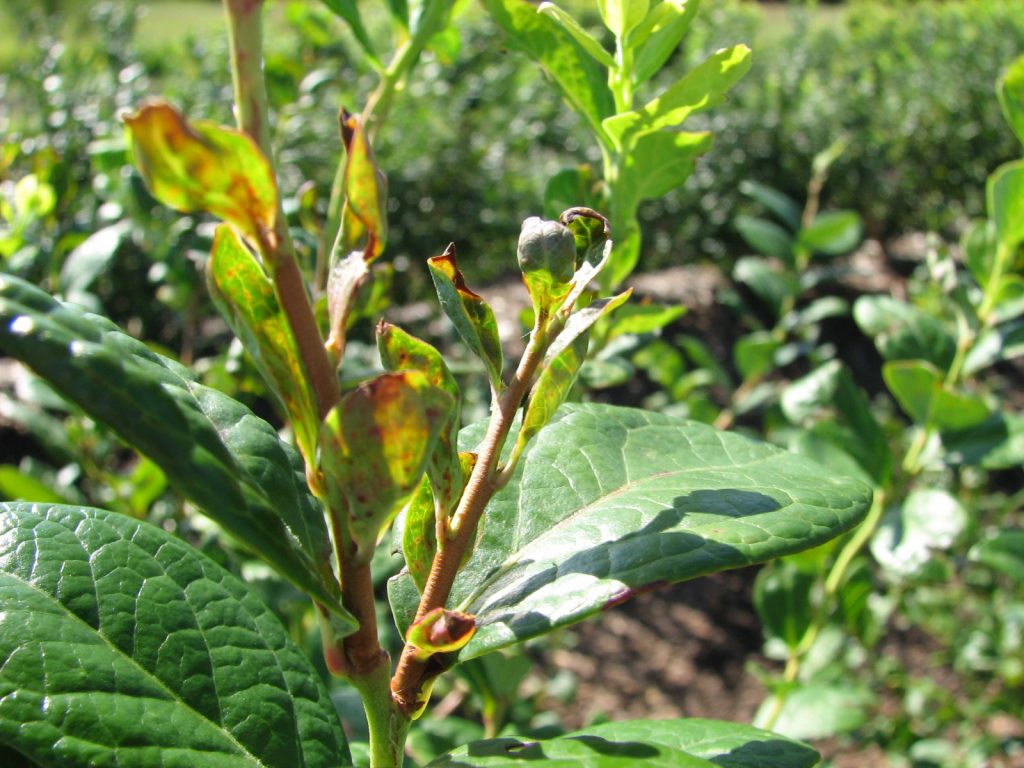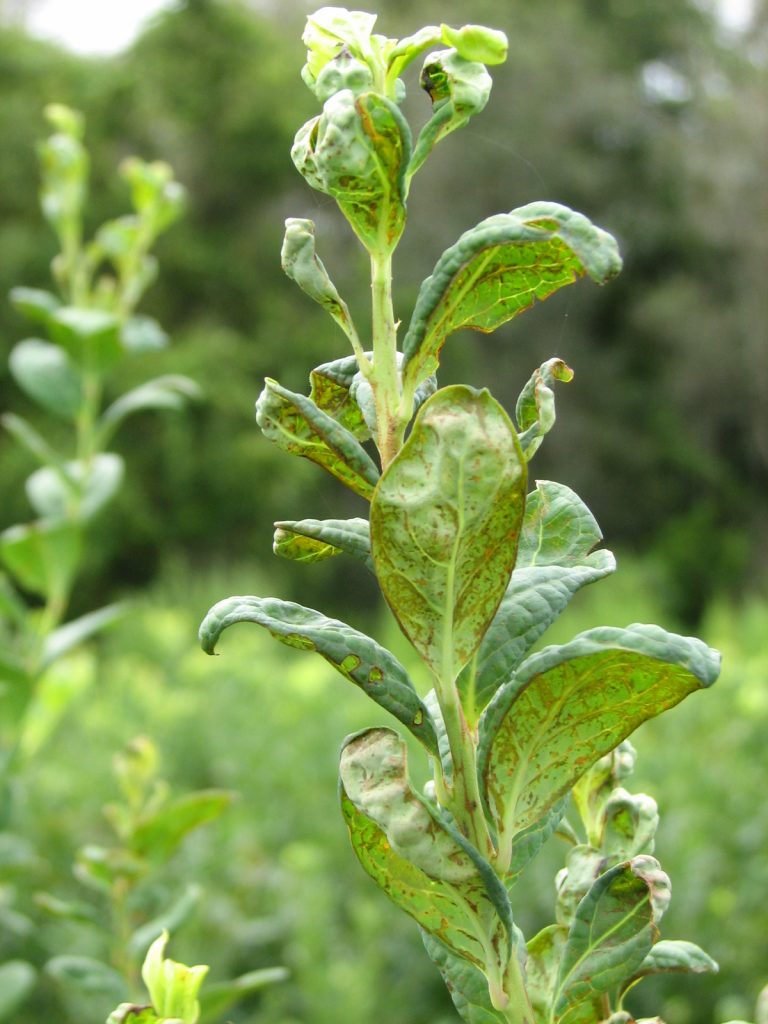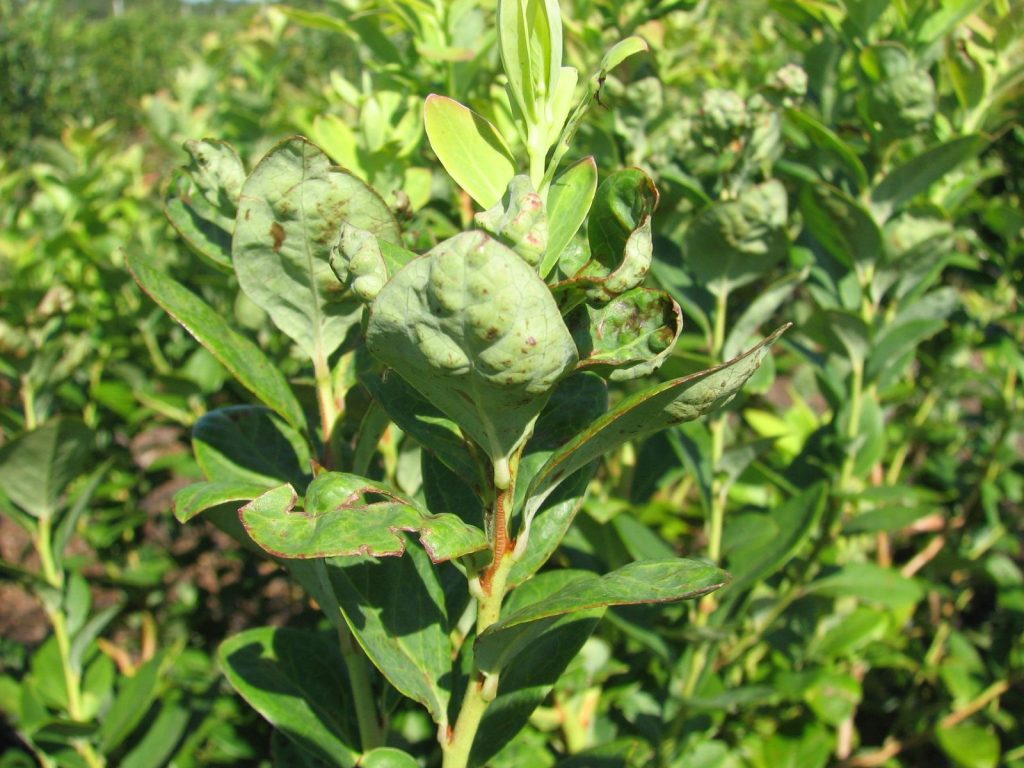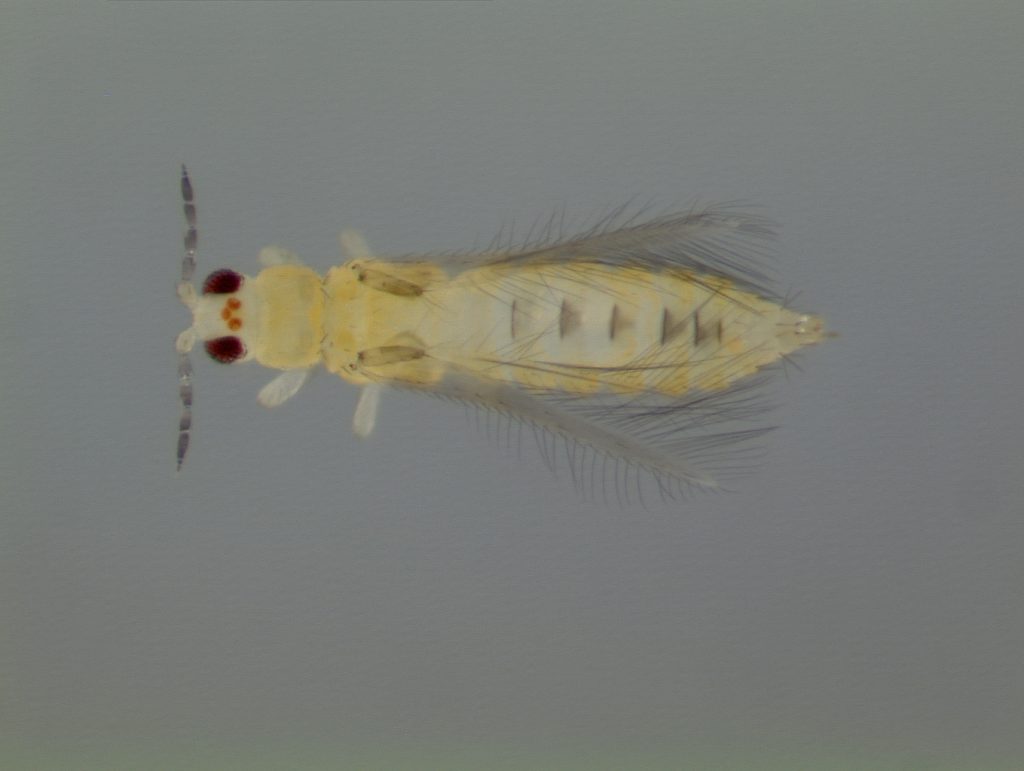
By Oscar Liburd
Chilli thrips, Scirtothrips dorsalis, was first detected in southern highbush blueberries in Florida in Orange, Sumter and Hernando counties during the summer of 2008. It is a major pest of many host plants, including vegetable, ornamental and fruit crops.

FEEDING DAMAGE
In blueberry, chilli thrips feed on young leaves, causing leaf bronzing (Figure 1) and shoot dieback in late spring to early summer shortly after the bushes are pruned. Some infestation symptoms include the edges around younger leaves and stems are eaten, and bushes become pale green with deformed leaves (Figure 2). During a heavy infestation, blueberry cupped leaves are quite noticeable, with larger leaves curving inward (Figure 3).
Overall, chilli thrips affect plant vigor and reduce the number of berries the following season.
IDENTIFICATION AND LIFE STAGES

Chilli thrips are smaller than flower thrips and are approximately 0.04 of an inch long. They have dark fringed wings and dark spots across the back of the abdomen (Figure 4).
Chilli thrips have four life stages: egg, larva, pupa and adult, including two actively feeding larval instars and two non-feeding pupal instars. Female thripsinsert their eggs into blueberry tissues, and the eggs hatch in about six to eight days. Females are capable of laying between 60 to 200 eggs.
Newly hatched larvae pass through two larval stages (first instar and second instar). These larval instars last for about six to eight days, during which time they feed on blueberry tissues. They then pass through a prepupal and a pupal stage, during which time they do not feed. Chilli thrips complete their life cycle in 17 to 21 days under ideal conditions.
In Florida, most of the chilli thrips outbreaks in blueberries were recorded from late May to September on new growth.

MANAGEMENT METHODS
Chemical insecticides including the use of Delegate® (spinetoram), Apta® (tolfenpyrad), Rimon® (novaluron), Assail® (acetamiprid) and Sivanto® (flupyradifurone) are the primary means to manage chilli thrips populations in blueberries.
Delegate® is effective in controlling larvae and adult chilli thrips. Apta® inhibits feeding of larval and adult thrips. Rimon® affects egg and larval development due to its growth regulator characteristics. Assail® is a neonicotinoid insecticide that can control larvae and adults due to systemic qualities. Sivanto® also controls larval and adult thrips and behaves similarly to neonicotinoids.
In organic production, Entrust® (spinosad) is the primary insecticide tactic. However, Azera® (pyrethrins + azadirachtin) and PyGanic (pyrethrins) can also be used in organic production.
Management for chilli thrips includes eliminating host plants, including weeds, that support their growth and development. Beneficial insect predators such as Geocoris spp. and Orius insidiosus feed on thrips and need to be considered when using chemical pesticides.









